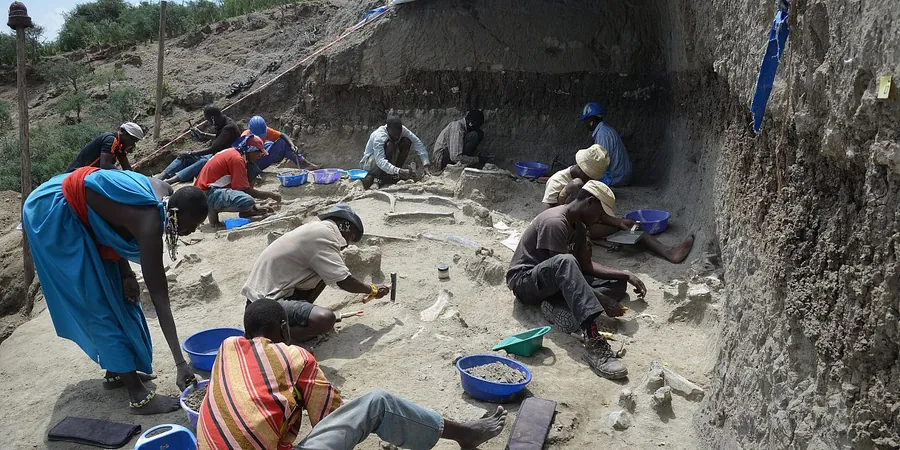
Ancient Bone Tools Discovered at Olduvai Gorge: A Game Changer in Human Evolution
2025-05-07
Author: Arjun
In a stunning revelation that could reshape our understanding of early human life, Jackson Njau, a prominent paleoanthropologist at Indiana University Bloomington, has uncovered bone tools dating back 1.5 million years at Tanzania's Olduvai Gorge—once thought to be a mere 250,000 years old. Njau's journey from a curious teen near Mount Kilimanjaro to a trailblazing scientist has illuminated the intricate relationship between our ancestors and their environments.
From Teen Dreams to Academic Realities
Growing up just 250 miles from the famed archaeological site, Njau was deeply influenced by the groundbreaking work of Louis and Mary Leakey, who first brought the Olduvai Gorge to global attention through their discovery of early human fossils. Inspired by their legacy, he embarked on a path that led him to study archaeology, eventually participating in an international field school in Kenya co-founded by Richard Leakey, the Leakeys' son.
A Discovery That Changes Everything
Njau’s research at Olduvai has been groundbreaking. He was among the first to document the predation pressures faced by prehistoric humans, showcasing the harsh realities of life thousands of years ago. Notably, he identified tooth marks from a previously unknown species of crocodile on ancient human bones, revealing insights into the dangers early hominins faced.
The Oldest Bone Tools Ever Found
The recent discovery of the world’s oldest bone tools marks a monumental shift in our understanding of human innovation. Previously, it was believed that systematic bone tool-making appeared only recently, but Njau's findings push back this timeline significantly. The tools, crafted from large mammal bones, reflect an advanced understanding of anatomy and material properties, hinting at a cognitive complexity unimagined for this era.
Torrential Rains Unearth Hidden Treasures
The serendipitous exposure of these artifacts came during the rainy season of 2010, when torrential rains carved through the gorge, revealing buried layers of history. After years of meticulous digging, Njau and his team have unearthed not just tools, but also thousands of stone artifacts and animal fossils, hinting at the resourceful nature of Homo erectus who may have scavenged and butchered the remains of stranded animals.
A Legacy of Insight and Adaptation
Olduvai Gorge continues to be a treasure trove for understanding the past. Njau emphasizes that examining these ancient adaptations can provide crucial context for today's global challenges. By analyzing how early hominins thrived in fluctuating environments, we can draw valuable lessons for our own future.

 Brasil (PT)
Brasil (PT)
 Canada (EN)
Canada (EN)
 Chile (ES)
Chile (ES)
 Česko (CS)
Česko (CS)
 대한민국 (KO)
대한민국 (KO)
 España (ES)
España (ES)
 France (FR)
France (FR)
 Hong Kong (EN)
Hong Kong (EN)
 Italia (IT)
Italia (IT)
 日本 (JA)
日本 (JA)
 Magyarország (HU)
Magyarország (HU)
 Norge (NO)
Norge (NO)
 Polska (PL)
Polska (PL)
 Schweiz (DE)
Schweiz (DE)
 Singapore (EN)
Singapore (EN)
 Sverige (SV)
Sverige (SV)
 Suomi (FI)
Suomi (FI)
 Türkiye (TR)
Türkiye (TR)
 الإمارات العربية المتحدة (AR)
الإمارات العربية المتحدة (AR)